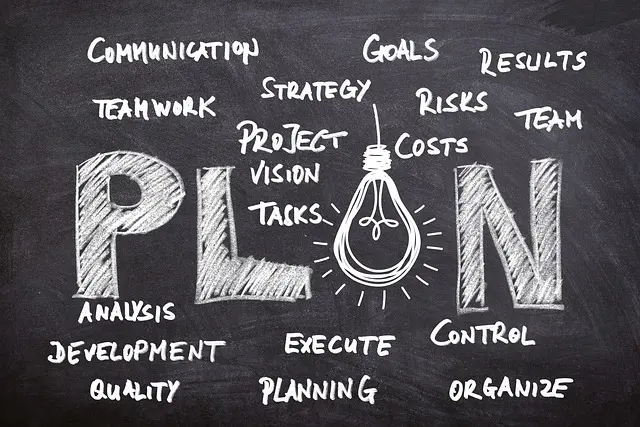
The Growing Demand for STEM Professionals
As we move further into the 21st century, the demand for STEM professionals continues to rise steadily. STEM, which stands for Science, Technology, Engineering, and Mathematics, encompasses a wide range of disciplines that are crucial to our modern society. With advancements in technology and the ever-evolving landscape of innovation, the need for individuals skilled in these areas has become paramount.
One key reason for the growing demand for STEM professionals is the rapid rate at which technology is advancing. From artificial intelligence to robotics, the digital revolution has transformed the way we live and work. Industries across the board, from healthcare to finance, are increasingly reliant on technology and data-driven solutions. As a result, there is a pressing need for individuals who possess the knowledge and skills to develop, implement, and maintain these technologies. This has led to a surge in job opportunities and openings for STEM professionals, with high earning potential and a promising career trajectory.
Job Opportunities and High Earning Potential in STEM Fields
The field of STEM (Science, Technology, Engineering, and Mathematics) offers a wide range of job opportunities with high earning potential. As technology continues to advance at a rapid pace, the demand for skilled STEM professionals continues to grow. From software developers to biomedical engineers, there is a vast array of career paths to choose from within the STEM fields.
One of the main factors driving the high earning potential in STEM fields is the scarcity of qualified professionals. With specialized skills in areas such as artificial intelligence, data analysis, and cybersecurity, STEM graduates are highly sought after by employers. Additionally, the complexity of the work involved in these fields often requires advanced degrees and expertise, contributing to higher pay scales. Whether it’s designing cutting-edge technologies, conducting scientific research, or developing innovative solutions to global challenges, STEM professionals have the opportunity to make a significant impact while also enjoying financial success.
The Impact of STEM on Innovation and Technological Advancements
STEM (Science, Technology, Engineering, and Mathematics) fields have had a profound impact on innovation and technological advancements across various industries. These disciplines have revolutionized the way we live, work, and interact with the world around us. Through rigorous research, experimentation, and problem-solving, STEM professionals have played a crucial role in shaping the modern world.
Advancements in technology have drastically transformed our daily lives, from the smartphones we use to the medical breakthroughs that save lives. STEM professionals, such as scientists, engineers, and computer programmers, have been at the forefront of driving these innovations. Their expertise in fields like artificial intelligence, robotics, and data analysis has paved the way for groundbreaking discoveries and cutting-edge technologies. Whether it is the development of self-driving cars or the creation of renewable energy sources, STEM has been instrumental in pushing the boundaries of what is possible in terms of innovation and technological advancements.
Developing Critical Thinking and Problem-Solving Skills in STEM Education
Critical thinking and problem-solving skills are essential in STEM education. Through hands-on experiments and real-world applications, students are encouraged to think critically, analyze data, and make informed decisions. This approach fosters a deep understanding of concepts and encourages students to question, explore, and solve complex problems. In STEM classes, students are encouraged to ask open-ended questions, think creatively, and collaborate with their peers. By challenging students to think critically and develop problem-solving skills, STEM education prepares them for the challenges of the modern world and equips them with the tools they need to succeed in their future careers.
In STEM education, students are presented with real-world problems that require them to apply their critical thinking and problem-solving skills. By engaging in hands-on activities and project-based learning, students learn to approach problems systematically and develop innovative solutions. They are taught to analyze the problem, break it down into smaller components, and develop a logical step-by-step plan to solve it. This process not only develops their critical thinking and problem-solving skills but also encourages them to think outside the box and come up with creative solutions. Overall, developing critical thinking and problem-solving skills in STEM education empowers students to become skilled problem solvers and prepares them for the challenges and opportunities of the future.
The Interdisciplinary Nature of STEM and Its Relevance in Today’s World
One of the key characteristics of STEM (Science, Technology, Engineering, and Mathematics) education is its interdisciplinary nature. STEM fields encompass a wide range of disciplines that intertwine and complement each other, leading to a holistic approach in problem-solving and innovation. This interdisciplinary approach allows individuals to bridge the gaps between different areas of knowledge and apply them to real-world challenges.
In today’s world, the relevance of interdisciplinary STEM education cannot be overstated. As societal problems become more complex and interconnected, addressing them requires a multidimensional understanding and collaboration between various fields. For instance, combining knowledge from biology, chemistry, and engineering can lead to breakthroughs in medical research and the development of innovative healthcare technologies. Furthermore, the integration of computer science and mathematics enables the advancement of artificial intelligence and data analytics, enhancing our ability to extract valuable insights and make informed decisions. By bringing together diverse disciplines, STEM fosters a holistic approach that is essential in solving complex problems and driving meaningful progress.
STEM Education as a Gateway to Global Collaboration and Cultural Exchange
STEM education plays a crucial role in fostering global collaboration and cultural exchange. Through the study of science, technology, engineering, and math, students are exposed to diverse ideas, perspectives, and approaches from around the world. This exposure not only enhances their understanding of different cultures but also encourages collaboration and knowledge-sharing on a global scale. By engaging in STEM projects and activities, students gain the opportunity to work with peers from different backgrounds, fostering a deeper appreciation for cultural diversity and promoting meaningful cross-cultural interactions.
Furthermore, STEM education encourages students to think critically and creatively, pushing the boundaries of innovation and problem-solving. This mindset transcends cultural barriers and enables individuals to collaborate effectively with counterparts from different countries. Moreover, STEM education equips students with the necessary skills to communicate and collaborate in a global context, allowing them to contribute to advancements in science and technology on an international level. In an increasingly interconnected world, STEM education serves as a gateway for individuals to harness their skills, gain exposure to diverse perspectives, and actively participate in global collaborations that address complex challenges facing society.
The Role of STEM in Addressing Societal Challenges and Sustainable Development
Societal challenges and sustainable development are two pressing issues that require innovative solutions. STEM, which stands for Science, Technology, Engineering, and Mathematics, plays a crucial role in addressing these challenges. STEM professionals, with their specialized knowledge and skills, are at the forefront of finding sustainable solutions and developing technologies that can positively impact society. From renewable energy sources to waste management systems, STEM professionals are constantly seeking ways to create a more sustainable and equitable future.
One way STEM contributes to addressing societal challenges is through the development of innovative technologies. For example, in the field of energy, STEM professionals are working towards finding alternative and renewable sources to meet the growing demand. Through advancements in solar and wind energy, as well as the exploration of new methods like geothermal and tidal energy, STEM experts are paving the way for a more sustainable energy future. Additionally, they are also focused on improving energy efficiency in existing systems, reducing carbon emissions, and finding ways to harness energy from unconventional sources. By tackling these challenges head-on, STEM professionals are playing a pivotal role in creating a more sustainable and environmentally conscious society.
Promoting Diversity and Inclusion in STEM Careers
Promoting diversity and inclusion in STEM careers is crucial for creating a more equitable and innovative society. By embracing a diverse range of perspectives, experiences, and backgrounds, we can foster a culture of creativity and collaboration within the STEM fields. In today’s globalized world, it is essential to have a workforce that reflects the diversity of our society, as it allows for a broader range of ideas and solutions to be developed.
Efforts to promote diversity and inclusion in STEM careers involve creating opportunities for underrepresented groups, such as women, racial and ethnic minorities, and individuals with disabilities. Organizations and educational institutions are actively working to break down barriers and provide equal access to STEM education and professional development. Additionally, mentorship programs, scholarships, and outreach initiatives aim to inspire and support individuals from diverse backgrounds to pursue careers in STEM. By fostering a diverse and inclusive environment, we can not only increase representation but also encourage the development of innovative solutions that address the complex challenges of our time.
The Transferable Skills Gained through STEM Education
STEM education not only equips students with knowledge and expertise in science, technology, engineering, and mathematics, but also fosters the development of various transferable skills that are highly valued in today’s global job market. One such skill is critical thinking, which is vital for problem-solving and decision-making. STEM students are trained to analyze information, evaluate evidence, and develop logical and creative solutions to complex problems. This ability to think critically enables them to approach challenges from different perspectives and adapt their thinking to new and unfamiliar situations, making them valuable assets in any professional setting.
In addition to critical thinking, STEM education also cultivates strong communication skills. STEM professionals need to be able to effectively communicate their ideas, findings, and solutions to both technical and non-technical audiences. Whether it’s presenting research findings, collaborating with colleagues, or explaining complex concepts to clients or stakeholders, clear and concise communication is crucial. STEM education provides students with opportunities to practice and hone their communication skills through group projects, presentations, and written reports. This emphasis on effective communication prepares STEM graduates to convey their ideas and contribute meaningfully to interdisciplinary teams and diverse work environments.
Empowering Individuals to Make Informed Decisions through STEM Literacy
In today’s technology-driven world, it is crucial for individuals to have a solid understanding of STEM (Science, Technology, Engineering, and Mathematics) concepts in order to make informed decisions. STEM literacy, which refers to the ability to comprehend and evaluate scientific and technological information, empowers individuals to navigate the complex landscape of modern life. By developing STEM literacy, individuals can critically analyze data, assess the validity of claims, and comprehend the implications of scientific findings. This knowledge equips them with the skills necessary to make informed decisions about their health, environment, and everyday lives.
STEM literacy also plays an essential role in fostering digital citizenship and media literacy. With the vast amount of information available online, it is crucial to have the ability to discern reliable sources and separate fact from fiction. Through STEM literacy, individuals can better evaluate the credibility of scientific studies, research articles, and digital resources. By understanding the methodologies of scientific inquiry and the principles of evidence-based decision-making, individuals can confidently assess the validity and reliability of information, ensuring that their choices are based on accurate data and sound reasoning. Empowering individuals with STEM literacy not only enhances their personal decision-making abilities but also strengthens their critical thinking skills, allowing them to contribute to the scientific discourse and engage in informed discussions.












